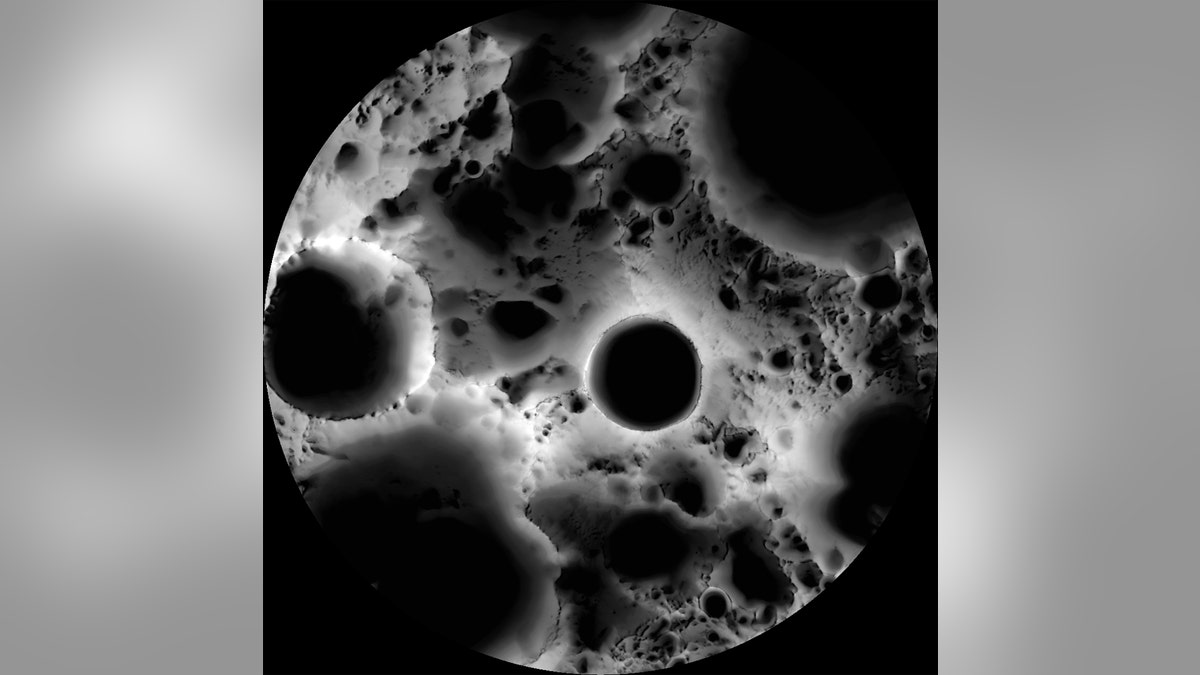NASA wants to send astronauts to the Moon's mysterious South Pole
In response to President Trump's goal of getting astronauts back to the Moon by 2024, NASA wants to do their part by sending them specifically to the Moon's South Pole. The South Pole is still largely mysterious and unexplored by humans, but is rich in ice and perhaps other resources. While the presence of water on the Moon is nothing new, the presence of ice could make lunar colonies a possibility.
As President Trump continues to push America's space exploration program forward with a plan to have astronauts return to the Moon by 2024, NASA is attempting to do its part. The space agency wants to send astronauts to the Moon's South Pole — a mysterious region that has never been explored by man.
On Monday, the government space agency said the South Pole, which is abundant with ice and perhaps other resources as well, is a target ripe for exploration.
"We know the South Pole region contains ice and may be rich in other resources based on our observations from orbit, but, otherwise, it’s a completely unexplored world,” Steven Clarke, deputy associate administrator in NASA's Science Mission Directorate, said in a statement. “The South Pole is far from the Apollo landing sites clustered around the equator, so it will offer us a new challenge and a new environment to explore as we build our capabilities to travel farther into space.”
AMERICANS WILL RETURN TO MOON BY 2024 -- WITH OR WITHOUT NASA, PENCE SAYS
In August 2018, researchers found frozen surface water on the Moon's polar regions, which could be broken down and eventually used for rocket fuel or oxygen to breathe. The scientists added surface ice could mean there is ice elsewhere in the solar system.

In this multi-temporal illumination map of the lunar south pole, Shackleton crater (19 km diameter) is in the center, the south pole is located approximately at 9 o'clock on its rim. The map was created from images from the camera aboard the Lunar Reconnaissance Orbiter. (Credit: NASA/GSFC/Arizona State University)
Though humans have never walked on the South Pole of the Moon, it is "the most thoroughly investigated region on the Moon" — at least, robotically.
The elliptical, polar orbit of NASA’s Lunar Reconnaissance Orbiter (LRO) is closest to the Moon during its pass over the South Pole region and has collected incredibly precise information about the region during its orbits over the past decade.
“We’ve mapped every square meter, even areas of permanent shadow,” Noah Petro, an LRO project scientist based at NASA’s Goddard Space Flight Center, added in the statement.
WATER MAY BE ALL OVER THE MOON, GIVING NEW HOPE FOR SUSTAINED LIFE
The water on the lunar surface is solid, due to the frigid temperatures in space, the lack of an atmosphere and the low angle at which sunlight hits the Moon’s surface in the polar regions. At times, the temperatures in the polar regions can reach -414 degrees Fahrenheit, which NASA described as "some of the lowest temperatures in the solar system."
While the presence of water on the Moon is nothing new, (it was first discovered on the Moon in 2009 by three spacecraft, according to Space.com), the presence of ice on the polar regions could make lunar colonies a possibility. It would let astronauts harvest the water without having to bring it from Earth.
The presence of water on the Moon's surface has also led some researchers to theorize its surface could have supported life billions of years ago.
“That record of water collection is a record that can help us understand how water and other volatiles have been moving around the solar system, so we’re very interested in getting to these locations and sampling the material there,” John W. Keller, a lunar scientist at NASA’s Goddard Space Flight Center, said in the statement.

